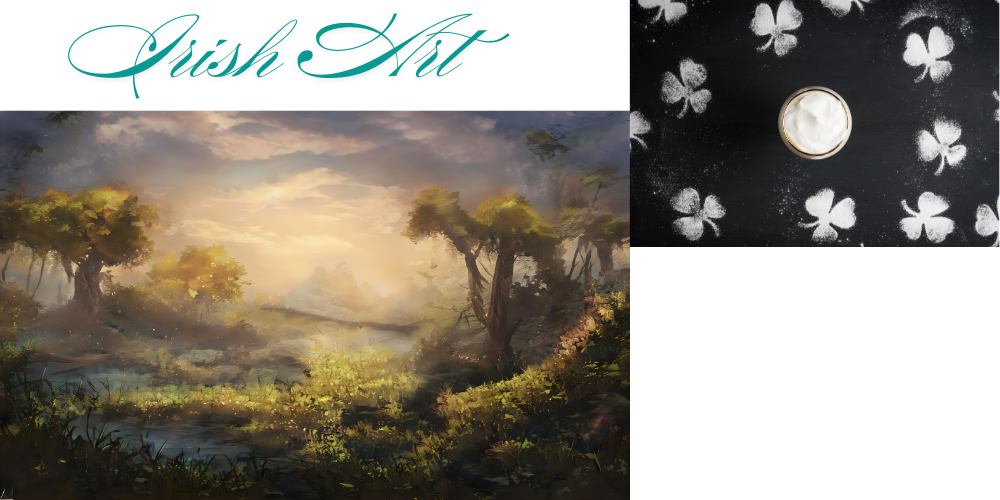The history of Irish art is vast and varied, lasting for thousands of years and covering all manner of genres. From the intricate carvings of Neolithic tombs to colourful canvases by modern painters, Ireland’s artists have always looked outward towards its distinctive landscape, mythology, and culture for inspiration. In this blog post, we are going to take you on a journey through the rich world of Irish art, which will look at its periods in history and who those artists have made an imprint.
Early Beginnings: The Dawn of Irish Art
The earliest examples of Irish art date back to the Neolithic period (c. 4000-2000 BC). These include the remarkable megalithic monuments at Newgrange and Knowth, adorned with intricate spiral and geometric patterns that offer a glimpse into the spiritual beliefs of Ireland\’s first inhabitants. The Bronze Age (c. 2000-500 BC) saw the emergence of sophisticated metalworking techniques, evidenced by beautifully crafted gold ornaments and bronze weapons.
The Golden Age of Irish Art: Monasteries and Manuscripts
The advent of Christianity in Ireland during the 5th century AD ushered in a golden age of artistic production. Monasteries became centres of learning and creativity, producing awe-inspiring and breathtaking illuminated manuscripts such as the Book of Kells. This masterpiece of calligraphy and illustration, with its vibrant colours and intricate designs, is considered one of the most outstanding examples of Insular art, a style that flourished in Ireland and Britain during the early medieval period.
Medieval and Renaissance Influences
In more recent times, during the medieval period (500-1500 AD), stone sculptures included some of the most influential high crosses with biblical scenes and Celtic designs. While mainland Europe enjoyed the artistic revolution of the Renaissance, Ireland was largely left alone on its island. At least, until the Vikings came in the 9th century with their own distinctive artistic contributions — fine metalwork is paramount here.
18th and 19th Centuries: Landscape and Portraiture
Painting scenes of landscape and portraiture began to flourish in Ireland during the 18th and 19th centuries. Painters such as William Ashford and Nathanial Hone depicted the landscape of Ireland, while portraitists such as James Barry and Hugh Douglas Hamilton deftly observed portraiture. Other key moments include the founding of the Royal Hibernian Academy, which helped drive Irish Art forward and establish a base for artists.
The Celtic Revival and the Birth of Modernism
The late 19th and early 20th centuries saw a Celtic Revival in which Irish culture and mythology were revived. The inspiration of Irish folklore and landscape resulted in the development of a style unique to their native land by artists such as John Lavery, who used these forms for years, together with Jack B. Yeats. Irish modernism in the arts developed in this era, too, with such figures as Mainie Jellett and Evie Hone making abstract artworks using solid colours.
Contemporary Irish Art: A Thriving Scene
The Irish art scene is alive and flourishing today, with artists across all demographics flexing their creativity. Irish art continues to blossom, with wonderful contemporary artists ranging from landscape artist Dorothy Cross to installation artist par excellence Sean Scully still making work that pushes boundaries and reinvents the wheel in an effort to both tribute their lineage and reflect the state of affairs at hand.
Conclusion
Irish art is a testament to the creativity and resilience of the Irish people. It reflects the island’s rich history, culture, and landscape, from ancient carvings to contemporary masterpieces. Whether you’re captivated by the intricate beauty of illuminated manuscripts or the bold expressiveness of modern paintings, there’s something in Irish art to inspire and delight everyone.
Disclaimer
This blog post provides a general overview of Irish art history. Due to the subject’s grandness, it is not possible to cover every aspect of an artist in detail. The information presented here is based on widely-accepted historical accounts and art historical research. However, interpretations and perspectives on art can vary, and new discoveries may emerge over time.


